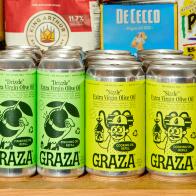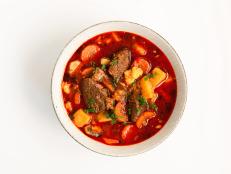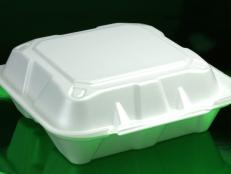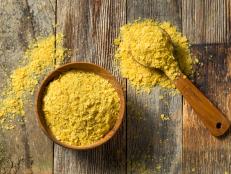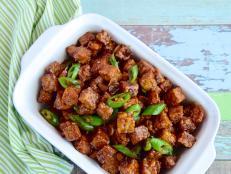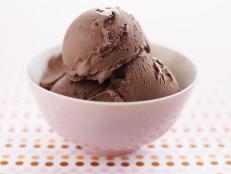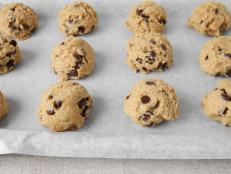What Is Kosher?
The Jewish dietary laws have been followed for millennia, with scholars weighing in over the centuries. Here’s a description of where they are today, and how they are followed in our modern society.

BigNazik/Getty Images
By Fraya Berg for Food Network Kitchen
Fraya is a chef and a contributing writer at Food Network.
The extent to which any individual follows the Kosher rules is Judaism is a personal choice. We hope you have a better understanding of what Kosher means after reading on, where we answer the most common questions about what it means to keep kosher.

Getty Images
What Is Kosher? And What Does Kosher Mean?
The literal translation of the word kosher is "fit" or "appropriate." In practice, it means following the dietary guidelines set down in the Torah, or Old Testament, and set by Jewish law. Keeping kosher is how it is referred to, and, in brief, here is a list of the rules that are followed by observant Jews.
- Meat and dairy may not be eaten at the same time. What that means to a family is that they have two sets of dishes, cutlery and pots and pans, one for milk and one for meat.
- There are some foods that are neutral (Parve) and can eaten with dairy or meat. These are foods that are neither meat nor dairy, such as eggs, fish with fins and scales and fresh vegetables and fruits. Parve foods can be cooked in either set of cookware. But once you cook an egg in a dairy pan, it’s considered dairy, so you’d eat it on a dairy plate with a dairy fork.
- The only animals that can be eaten are those with a cloven hoof who chew their cud. Beef, lamb and goat are permitted; pork is not. The meat must be butchered and processed according to kosher guidelines; more on that below.
- Domesticated fowl are okay; birds of prey are not. So all domesticated chicken, turkey, duck and geese are okay.
- The only seafood permitted is fish with fins and scales. Shellfish is not allowed.

LauriPatterson/Getty Images
What Is Kosher Style?
Kosher-style can mean a few things.
To someone who follows the dietary laws and only eats strictly kosher food, it means you cooked something using kosher meat or chicken, didn't include any forbidden foods and followed all the rules about not using dairy with it. It also probably means that the kitchen the food was prepared in is kosher as well, with meat and dairy kept separate (separate counters, sinks, dishwashers, ovens, plates, servers, etc) and only kosher ingredients used.
However, there are many variations of what people will eat if they do keep kosher. There are many people who keep kosher very strictly at home, but they will come to your non-kosher home and happily eat anything you make if you use kosher meat and don’t use any dairy products. If you want to invite quests into your home and they are strict about the laws, just ask them what would be ok. They’re your friends - everyone loves it when someone else cooks.
What Is a Kosher Diet?
A Kosher diet is just a different way to say that a person follows all the traditional Jewish dietary laws when they eat. It means the same thing as saying someone keeps kosher.
What Makes Something Kosher?
For meat to be kosher, it needs to follow several rules, and they’re outlined in the next section. Raw vegetables and fruits are innately kosher, as are eggs. For foods that are packaged, the factory or packaging plant where they are processed is inspected by the people who grant a certification if all the rules are being followed. The inspectors are specially trained, and the process is akin to an inspection by the health department, with different criteria for a passing grade. It’s not A, B, C, or D, but either pass or fail, no middle ground. Once the factory passes, it gets to put the kosher label on its foods.

connerscott1/Getty Images
How Is Kosher Meat Different?
Kosher meat is different from non-kosher meat in three main ways.
The first difference is that for an animal to yield kosher meat, it must be slaughtered following the rules laid down centuries ago. The animals are slaughtered by a person who is specially trained to kill the animal as quickly and painlessly as possible. This applies to beef and poultry.
For beef, the next rule is that the cuts of meat come from the front end of the animal. Slaughterhouses are really happy about this rule, because they can sell the kosher meat at a premium, and the cuts from the back end can be sold as non-kosher.
The final butchering rule is that you should not eat meat with blood in it. To accomplish this edict, the meat is salted to draw out the blood. Many people take advantage of the salting process at Thanksgiving time: buying a kosher turkey means you don’t have to brine it, because it’s already brined.
The next few steps are really a supply issue; being sure that the meat goes to a kosher butcher you trust to have good products, who follows the rules.

Calin Hanga/Getty Images
How Do You Know If Something Is Kosher?
For packaged goods such as cookies, ketchup, bread, cake mixes - really anything you can buy at the grocery store - it'll have a little symbol on it. There are a number of symbols, and, in addition to signifying kosher, the symbol will tell you if it dairy or parve (neutral). The strictest form of kosher is called glatt kosher. If you order a deli platter from a kosher deli, it will be completely sealed with plastic wrap so nothing can get in, and it will have stickers on it signifying that it is glatt. You could take anything like that to any strict kosher home and know that you’ve done the right thing. One more tip is that most vegan food is Kosher.
Kosher-Style Recipes

Renee Comet, © 2016, Television Food Network, G.P. All Rights Reserved
This cake is amazing any time of year, but many families have it as a Passover dessert. The butter can be swapped with parve margarine so it can be served after a meat meal.

All vegetables are kosher, as are oils and spices as long as they are marked with the proper certification. This recipe is a loving nod to the Middle Eastern food served in Israel.

Round challah, to signify the circle of life, is traditionally served at Jewish New Year celebrations along with apples and honey for a sweet new year.

This brisket hits all the right notes: sweet, salty, citrus and hot. Kikkoman soy sauce is kosher, and it's also possible to buy kosher sriracha.

Matt
Cooking mushrooms brings out their meatiness; adding veggies and topping them with dairy-free creamy mashed potatoes makes this vegan entreé a winner.
Related Links:












